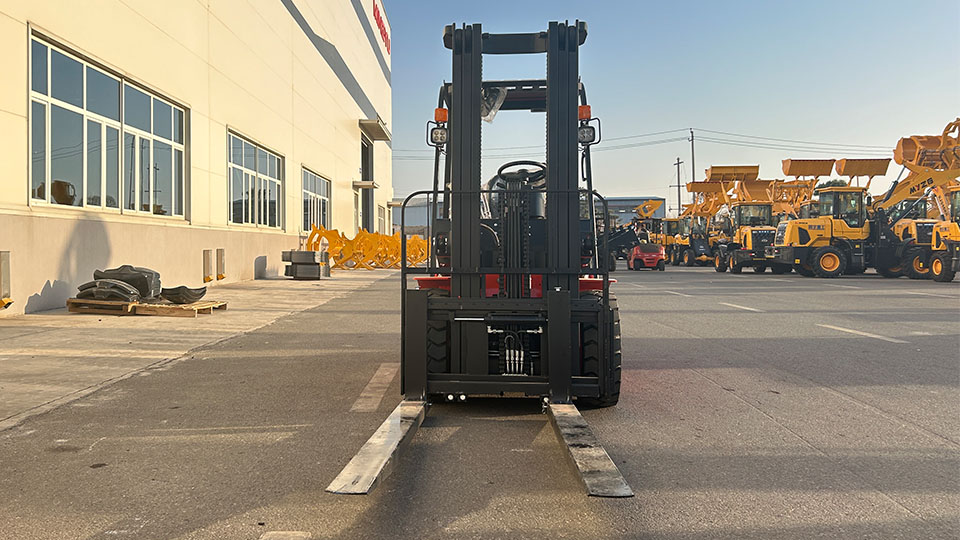
Introduction
Forklifts are indispensable in modern warehouses and industrial settings for moving and lifting heavy materials. They are designed to transport goods over short distances, typically within a facility. Proper use of a forklift is crucial not only for efficiency but also for safety. This article provides a detailed guide on how to use a forklift, including safety protocols, operation techniques, and maintenance tips.
Understanding Forklift Basics
Types of Forklifts
Pneumatic Tire Forklifts: Ideal for outdoor use or on rough surfaces.
Cushion Tire Forklifts: Best for indoor use on smooth surfaces.
Electric Forklifts: Quiet and clean, suitable for indoor environments.
LPG/Gasoline Forklifts: Used for heavy-duty lifting and long shifts.
Forklift Components
Mast: The vertical structure that allows the forks to lift and lower.
Forks: The horizontal prongs that hold and move loads.
Load Capacity: The maximum weight the forklift can safely lift.
Lift Height: The maximum height the forks can reach.
Tires: Designed for specific terrains and surfaces.

Safety Protocols
Pre-Operation Checks
Inspect the Forklift: Check tires, lights, and hydraulic systems.
Battery/Fuel Level: Ensure adequate levels for operation.
Leaks: Look for any fluid leaks.
Controls: Test all controls for proper functioning.
Operating Rules
Wear a Seat Belt: Always wear the seat belt when operating the forklift.
No Overloading: Never exceed the forklift’s load capacity.
No Standing on Forks: Never stand or walk on the forks.
No Speeding: Maintain a safe speed, especially in crowded areas.
No Under Load: Do not drive under a suspended load.
Training and Certification
OSHA Requirements: Ensure operators are trained and certified.
Regular Refresher Courses: Keep skills sharp and up-to-date.
Company Policies: Adhere to specific company safety guidelines.
Lifting Techniques
Loading
Approach: Slowly approach the load at a 90-degree angle
Lower Forks: Lower the forks until they are below the load.
Slide Forks Under Load: Carefully slide the forks under the load.
Lift Slowly: Lift the load slowly and check for stability.
Unloading
Lower to Height: Lower the load to the desired height.
Slide Off: Slide the load off the forks.
Lower Forks: Lower the forks to the ground.
Stacking
Align: Align the forks with the load.
Lift: Lift the load slowly and steadily.
Stack: Place the load on the desired shelf or stack.
Load Handling
Securing Loads
Balance: Ensure the load is balanced on the forks.
Secure: Use straps or chains if necessary.
Check: Regularly check the load for stability during transport.
Handling Different Types of Loads
Palletized Loads: Use forks to slide under pallets.
Non-Palletized Loads: Use a forklift attachment or spreader.
Odd-Shaped Loads: Use special attachments for stability.
Warehouse Operations
Navigation
Clear Path: Ensure the path is clear of obstacles.
Signal: Use hand signals or horns to alert others.
Mirrors: Use mirrors to check blind spots.
Traffic Management
Right of Way: Forklifts have the right of way over pedestrians.
Pedestrian Zones: Designate areas where forklifts cannot enter.
Speed Limits: Enforce speed limits in pedestrian areas.
Maintenance and Inspection
Daily Checks
Fluid Levels: Check oil, hydraulic fluid, and battery levels.
Tires: Inspect tires for wear and proper inflation.
Hydraulic System: Look for leaks or damage.

Weekly Checks
Controls: Test all controls for smooth operation.
Lift Capacity: Ensure the lift capacity is within specifications.
Lighting: Check headlights, taillights, and turn signals.
Monthly Checks
Battery: Test battery charge and condition.
Mast: Inspect the mast for wear or damage.
Forks: Check for straightness and wear.
Troubleshooting Common Issues
Battery Problems
Charging Issues: Ensure the battery is properly charged.
Corrosion: Clean battery terminals regularly.
Battery Life: Replace batteries as needed.
Hydraulic System Issues
Leaks: Repair or replace damaged seals.
Pressure Problems: Check pressure settings and adjust if necessary.
Noise: Inspect for loose parts or damaged components.
Tires and Wheels
Wear: Replace worn tires to prevent accidents.
Alignment: Ensure wheels are properly aligned.
Tire Pressure: Maintain correct tire pressure for safety and efficiency.
Risk Assessment and Mitigation
Identifying Risks
Load Stability: Assess the risk of load shifting.
Surface Conditions: Consider the impact of slippery surfaces.
Obstacles: Identify potential obstacles in the path.
Mitigation Strategies
Training: Provide comprehensive training to operators.
Safety Gear: Ensure operators wear appropriate safety gear.
Procedures: Establish clear operating procedures.
Conclusion
Operating a forklift requires a combination of skill, knowledge, and adherence to safety protocols. By following the guidelines outlined in this article, operators can ensure safe and efficient use of forklifts in warehouse operations. Regular training, maintenance, and risk assessment are key to preventing accidents and ensuring the longevity of the equipment.
References
National Safety Council. (2020). Forklift Safety Training Manual.
American Industrial Truck Association. (2019). Forklift Operator’s Handbook.
This article serves as a comprehensive guide for anyone looking to operate a forklift safely and efficiently. It covers all aspects from understanding the basics to advanced operation techniques, ensuring that operators are well-prepared for their responsibilities in warehouse environments.
Name: selena
Mobile:+86-13176910558
Tel:+86-0535-2090977
Whatsapp:8613181602336
Email:vip@mingyuforklift.com
Add:Xiaqiu Town, Laizhou, Yantai City, Shandong Province, China